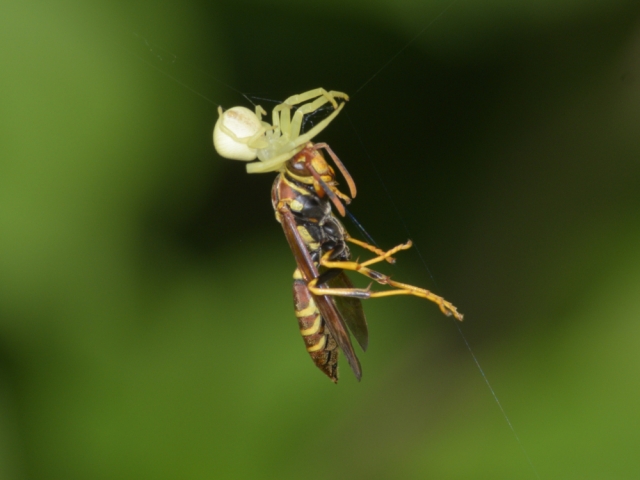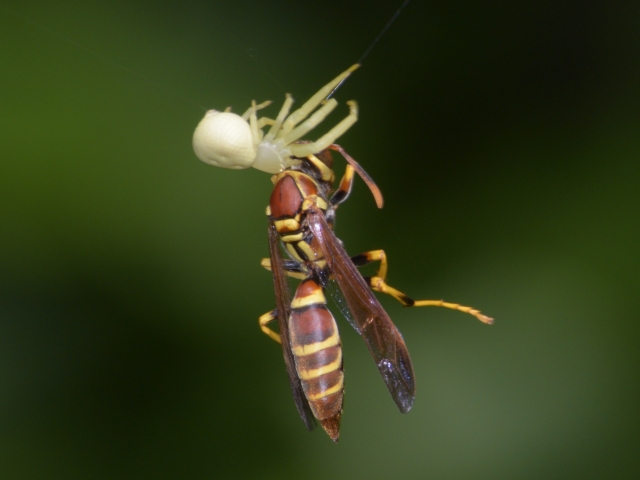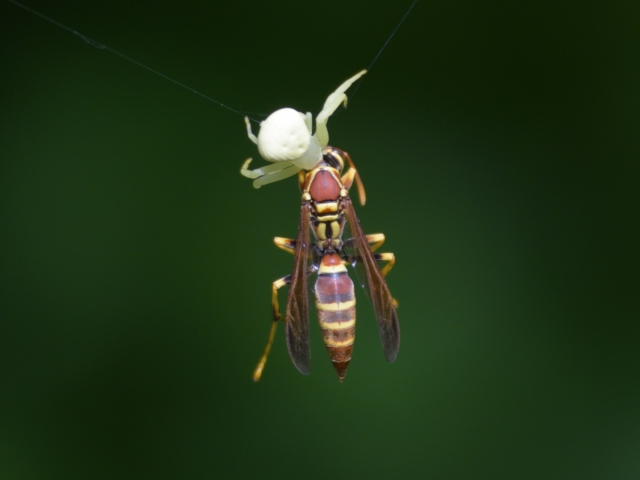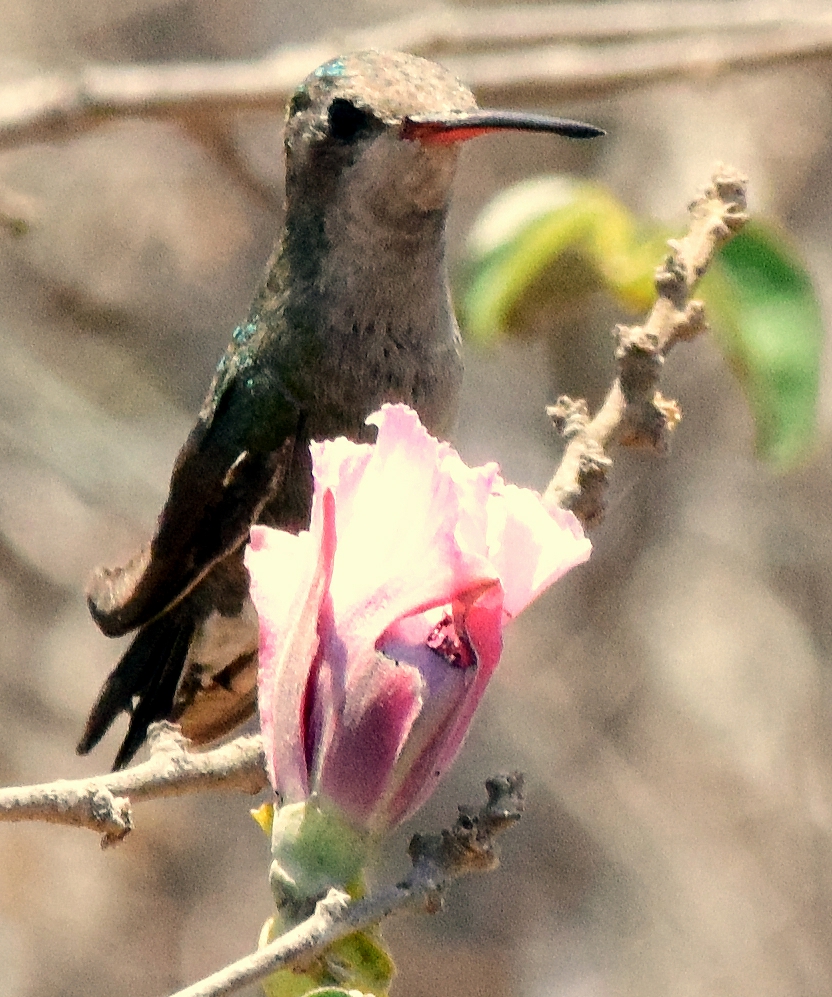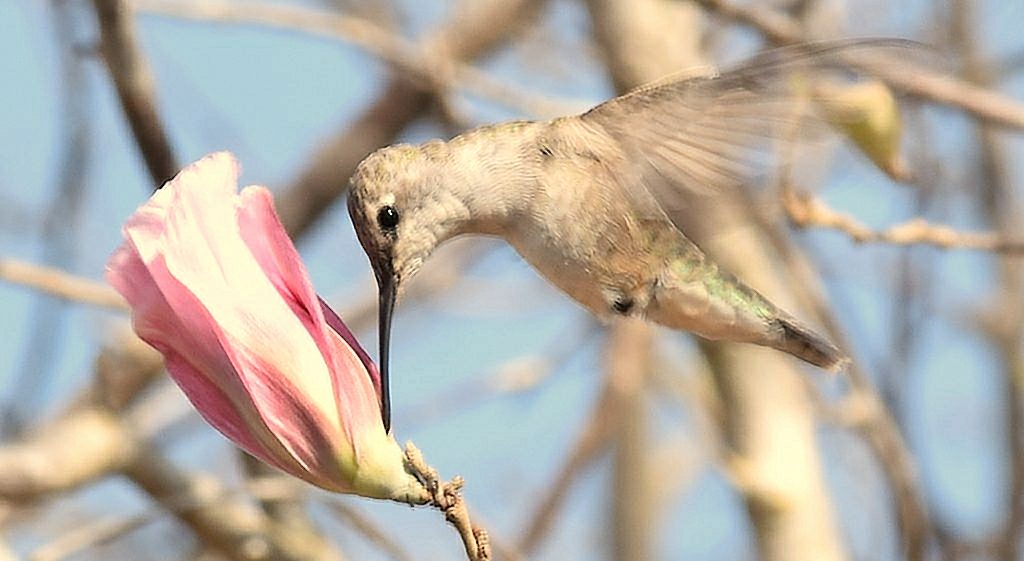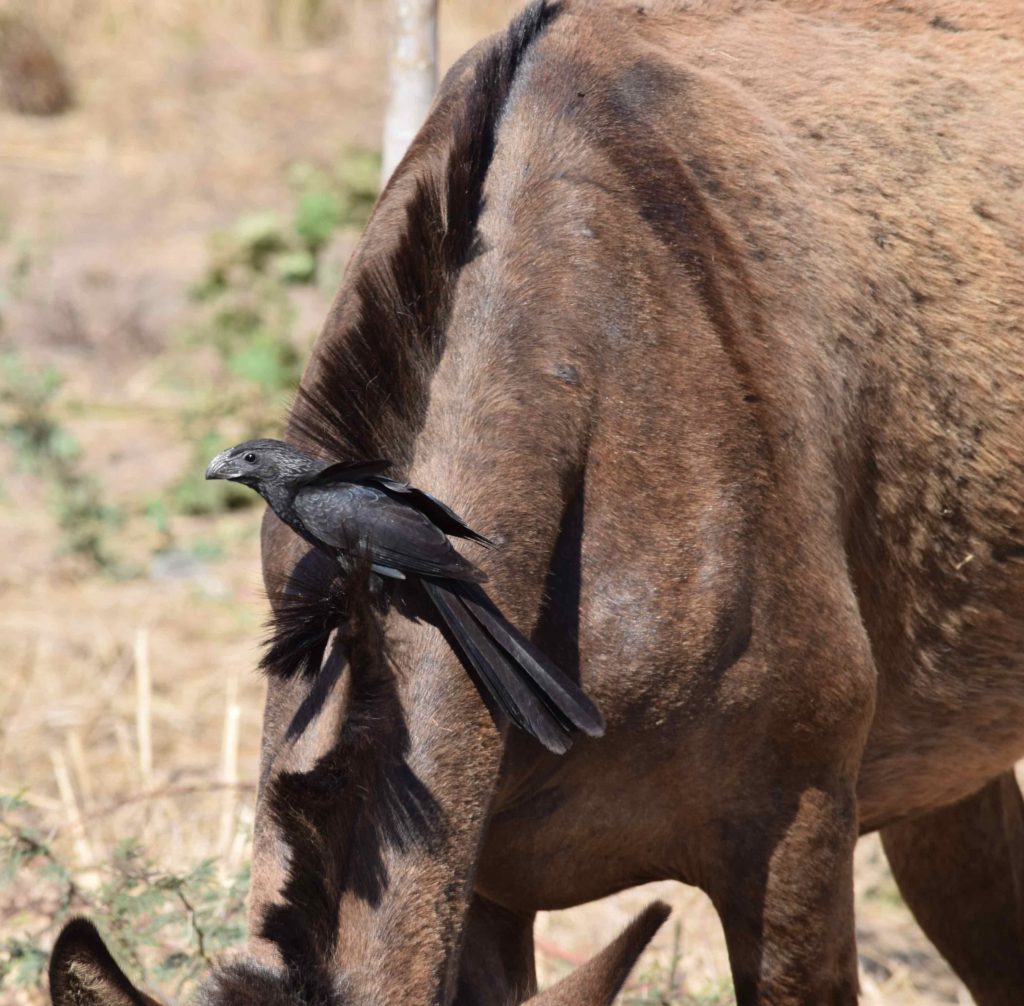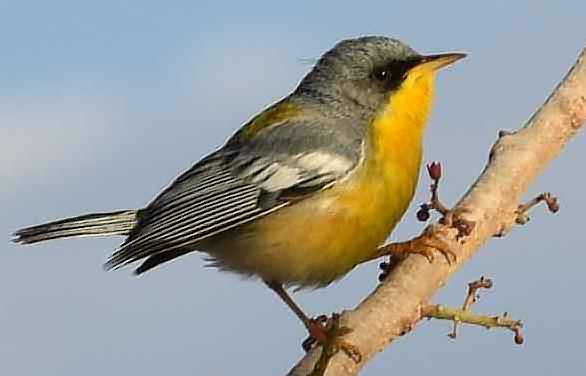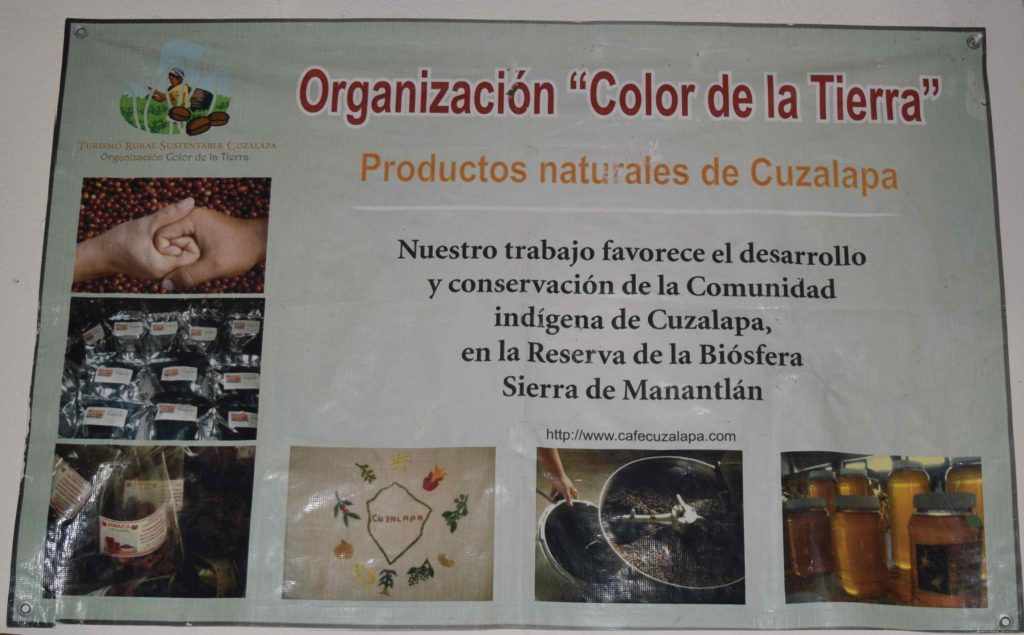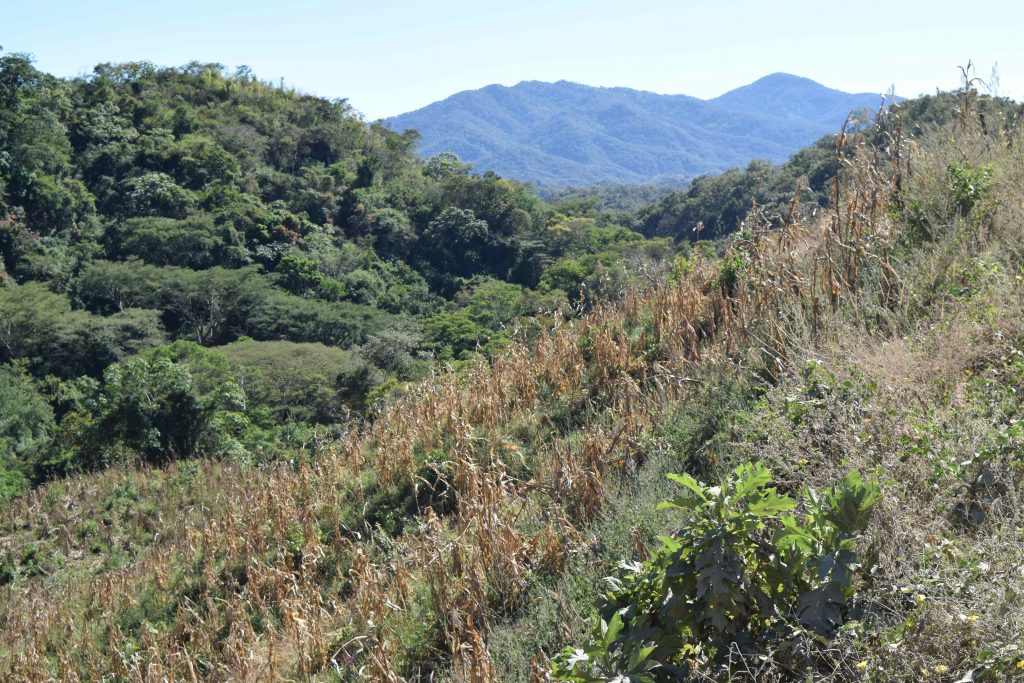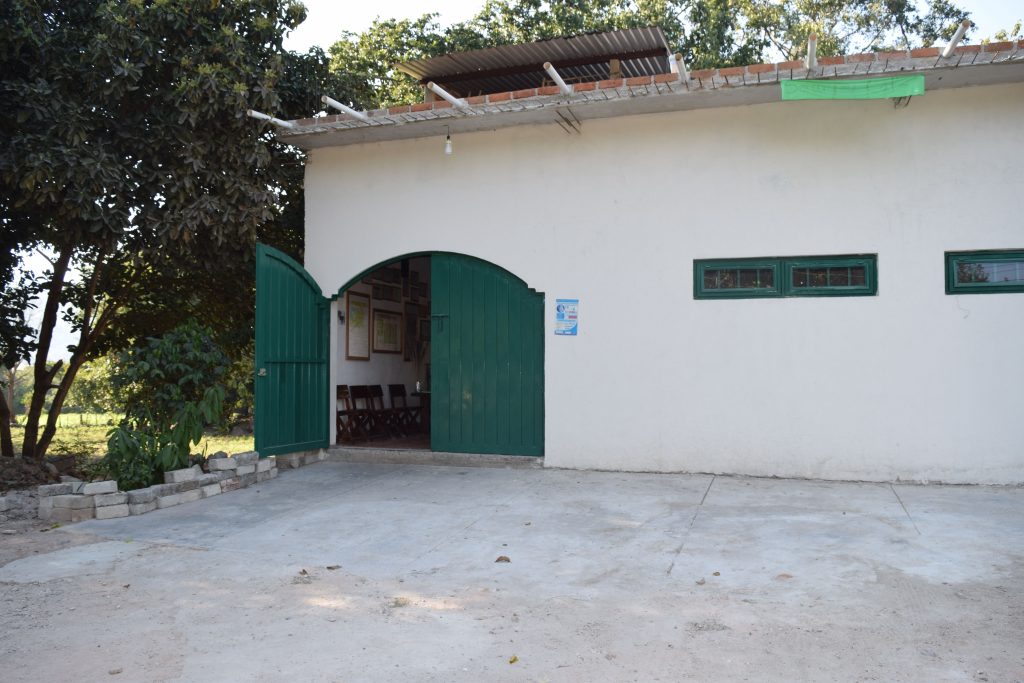Doing a morning walk in Cuixmala on the trail along the Pistia-filled lake near Carretera 200 (across from the fundación), I came across something “floating” in the air in front of me. Usually this is a caterpillar hanging by one of its silken threads. As can be seen in these photos, that wasn’t the case here:
Crab spiders (Family Thomisidae) are incredible in taking on larger and seemingly dangerous prey like this paper wasp (Polistes dorsalis) without the assistance of a web. Instead, they hang out motionlessly and frequently camouflaged at flowers or on leaves with fallen flowers. Here, they pounce on their prey and hold them with their first two pairs of legs while biting and injecting venom. Crab spiders are not dangerous to humans but you have to think that their venom is pretty powerful.
What happened here? While paper wasps don’t collect pollen to feed their offspring, they do occasionally visit flowers to feed on their nectar. They also search plants for caterpillars and other insects that they feed their offspring. For whatever reason, this one got too close to a crab spider.
While crab spiders don’t build webs, they still make and use silk. Normally eating their prey where they catch them, this one shot a line of silk out and left its perch with the wasp in its chelicerae (jaws). We can’t know exactly why it did this but perhaps a large ant or some other dangerous animal or potential predator got too close.
While the crab spider in the photos is holding the paper wasp by the base of its head, this doesn’t mean that’s where it delivered its deadly bite. Crab spiders prefer to feed from the head where they inject digestive enzymes and then suck up the slurry. What they suck up from the head must be very good. One study of crab spiders feeding on fruit flies showed that they always started at the head and then switched to the abdomen to complete their meal. If, however, a new fly appeared while a crab spider was feeding from the head of a captured fly, the spider would prefer trying to catch another fly rather than finish its meal at the other end of the captured one.
Anyway, shortly after the last picture the crab spider fell to the ground with its paper wasp where I presume it finished its meal.
References
Pollard, S.D. Oecologia (1989) 81: 392. https://doi.org/10.1007/BF00377089

